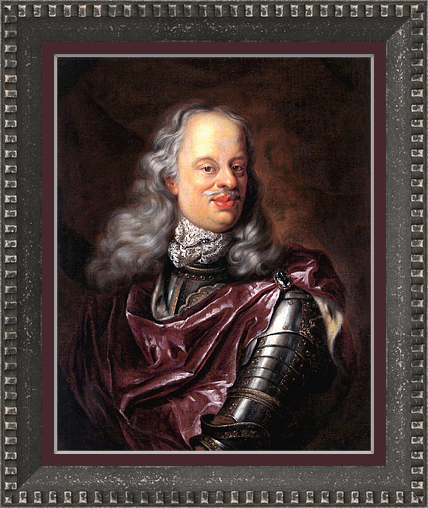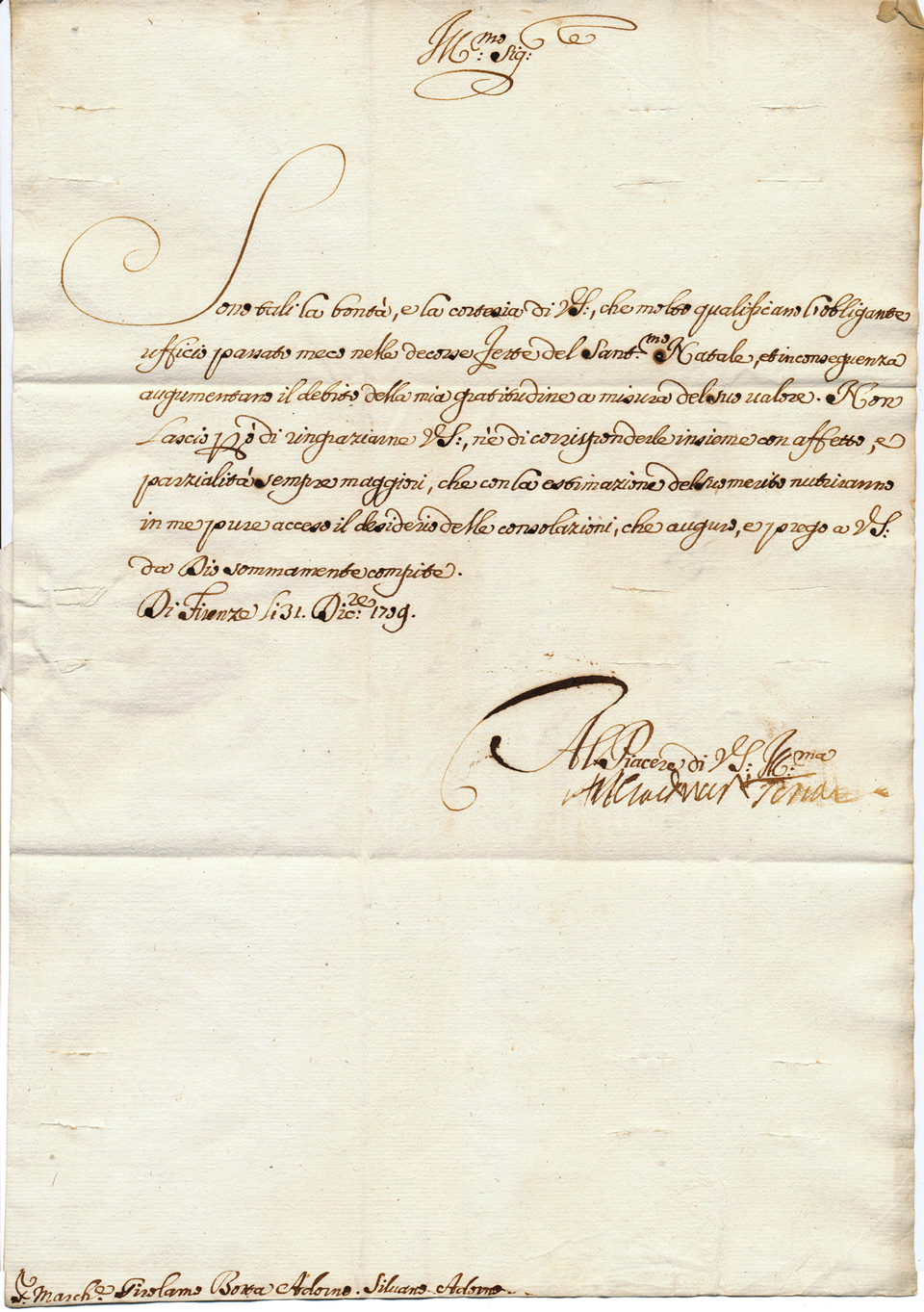Cosimo de Medici III
Cosimo de Medici III
Cosimo de Medici III Manuscript Letter Signed - 1709
Manuscript signed by Cosimo de Medici III, Grand Duke of Tuscany and patron of the arts. Letter dated 1709 from Florence to Marquis Botta in Rome, signed “Il Granduca di Toscana” with a beautiful, intact and sharply defined Medicean seal. Fresh, in very good condition and very rare. Translated from Italian in full:
To Your Lordship Mr Marquis Girolamo Botta [appears both on the address panel beneath the Medici seal, repeated at the bottom of the letter]
Most illustrious Sir,
Such are the goodness and courtesy of Your Lordship that they highly qualify the obliging office that spent with me the last Christmas holiday and hence they motivate the debt of my gratitude commensurated with Your value. I neither quit thanking Your Lordship nor quit favouring You, with both affection and growing predilection, that with the estimation of Your merit will continue to kindle my strong desire for God to utterly comfort Your Lordship.
Florence, 31st December 1709.To the pleasure of
[signed] The Grand Duke of Tuscany [Cosimo de Medici]
[To] Marquis Girolamo Botta Adorno. Silvano Adorno.
 |
|
[Image not included; for reference only]
Cosimo III de’ Medici (1642-1723) was the penultimate Medici Grand Duke of Tuscany. His reign began at age 28—from 1670 to 1723—being the elder son of Grand Duke Ferdinando II. Cosimo’s 53-year long reign, the longest in Tuscan history, was marked by a series of ultra-reactionary laws that regulated prostitution and banned May celebrations. His reign also witnessed Tuscany’s deterioration to previously unknown economic lows. He was succeeded by his elder surviving son, Gian Gastone, when he died in 1723.
He married Marguerite Louise d’Orléans, a cousin of France’s Louis XIV. It was a marriage fraught with tribulation, and Marguerite Louise eventually abandoned Tuscany for the Convent of Montmartre. Together, they had 3 children: Ferdinando in 1663, Anna Maria Luisa, Electress Palatine, in 1667, and Gian Gastone, the last Medicean ruler of Tuscany, in 1671.
In later life, Cosimo attempted to have Anna Maria Luisa recognized as the universal heiress of Tuscany, but Charles VI, Holy Roman Emperor, would not allow it because Florence was nominally an imperial fief, and he felt he alone could alter the Tuscan laws of succession. All Cosimo’s efforts to salvage the plan failed and, in 1737 upon his younger son’s death, Tuscany passed to the House of Lorraine.
Cosimo III left Tuscany one of the poorest nations in Europe; its treasury empty and the people weary of religious bigotry, the state itself was reduced to a gaming chip in European affairs. Among his enduring edicts is the establishment of the Chianti wine region.


